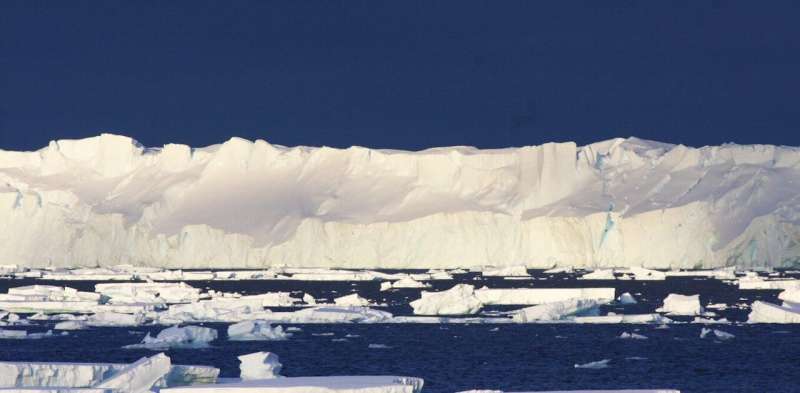
As Antarctica’s slow rivers of ice hit the sea, they float, forming ice shelves. These shelves extend the glaciers into the ocean until they calve into icebergs.
But they also play a crucial role in maintaining the world as we know it, by acting as a brake on how fast the glaciers can flow into the ocean. If they weren’t there, the glaciers would flow faster into the sea and melt, causing sea levels to rise.
Unfortunately, Antarctica’s ice shelves are not what they were. In research published today in Nature, we show these ice shelves have significantly reduced in area over the last 25 years due to more and more icebergs breaking off. Overall, the net loss of ice is about 6,000 billion tons since 1997.
We found Antarctica’s ice shelves have lost twice as much mass as previous studies suggested.
Ice shelves are now weaker than at any time since at least the 1990s. This has led Antarctica’s glaciers to begin adding more water to the oceans, and more quickly. To date, much of the concern about the cryosphere—the world’s frozen parts—has focused on the fast-melting Arctic sea ice. But as climate change intensifies, Antarctica will begin melting in earnest, contributing more to sea level rise.
We found the Pine Island Glacier and the so-called “Doomsday” Thwaites Glacier—which could destabilize the entire West Antarctic ice sheet if it melts—are highly sensitive to calving, and are already increasing their contribution to sea level rise as their protective ice shelves crumbled.
Each calving event has left the ice shelf weaker and allowed the Thwaites Glacier behind it—the size of the state of Victoria—to flow faster into the ocean. While the Thwaites ice shelf is relatively small, it is vital. Until now, it has acted like a plug. If it keeps retreating, it could potentially destabilize the entire West Antarctic ice sheet and unlock several meters of sea level rise.
Our warming atmosphere and ocean are the root cause. Given the long lag time between greenhouse gases trapping heat and actual warming, it stands to reason that what we’re seeing in Antarctica right now is at least partly a response to warming gases dumped into the atmosphere decades or even a century ago. That means we’re already locked into more ice shelf retreat, as emissions have continued rising.
Antarctica holds around 30 million cubic kilometers of ice, a truly enormous figure. That represents around 90% of the world’s surface fresh water. If it all melted, seas would rise almost 60 meters (196 feet). Humanity’s decisions will shape what Antarctica will look like in decades to come, and how much ice will remain.